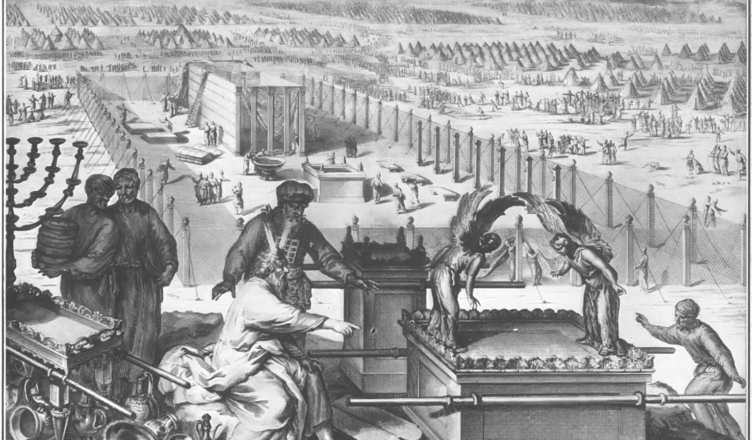From Exodus 36-38
 Scripture was used to keep records. In today’s passage we see records about the amounts given in order to have the tabernacle and its items of worship constructed.
Scripture was used to keep records. In today’s passage we see records about the amounts given in order to have the tabernacle and its items of worship constructed.
This post is part of my bible in a year series.
Passage and Comments
This chapter is very close to earlier passages in Exodus. It is almost a word-for-word record of the fulfilment of the instructions given by God to Moses during his first stay on mount Sinai. The similarity between the instructions and their fulfilment indicates that the people obeyed God in every detail. Everything was made just as Moses had been instructed.
21 These are the records of the tabernacle, the tabernacle of the testimony, as they were recorded at the commandment of Moses, the responsibility of the Levites under the direction of Ithamar the son of Aaron the priest.
22 Bezalel the son of Uri, son of Hur, of the tribe of Judah, made all that the LORD commanded Moses; 23 and with him was Oholiab the son of Ahisamach, of the tribe of Dan, an engraver and designer and embroiderer in blue and purple and scarlet yarns and fine twined linen. (Ex 38.21-23)
‘Records’. Scripture was used to keep records. The account is a little tedious. However the detail shows the importance of the tabernacle for the people. And perhaps Israel could look back at the scriptures and recall how to build their holy places.
‘Bezalel’. Bezalel was part of Caleb’s house. He was gifted by God as a skilled craftsman in wood, metal and precious stones, and placed in charge of the making of the tabernacle. He taught other workers who worked under his direction. (Ex. 31.1-11; 35.30-35)
24 All the gold that was used for the work, in all the construction of the sanctuary, the gold from the offering, was twenty-nine talents and 730 shekels, by the shekel of the sanctuary.
25 The silver from those of the congregation who were recorded was a hundred talents and 1,775 shekels, by the shekel of the sanctuary: 26 a beka a head (that is, half a shekel, by the shekel of the sanctuary), for everyone who was listed in the records, from twenty years old and upward, for 603,550 men. (Ex 38.24-26)
‘Gold’, ‘silver’. The gold, silver and bronze are gifts given by the people for the construction of the tabernacle. The more valuable materials are listed first. The amounts are significant. But need to be considered with respect to the number of people in the camp.
‘Everyone listed in the records’. The number is a sizable 603550 men. Thus does not include women and children. So Israel probably numbered close to one and a half to two million Hebrews.
27 The hundred talents of silver were for casting the bases of the sanctuary and the bases of the veil; a hundred bases for the hundred talents, a talent a base. 28 And of the 1,775 shekels he made hooks for the pillars and overlaid their capitals and made fillets for them.
29 The bronze that was offered was seventy talents and 2,400 shekels; 30 with it he made the bases for the entrance of the tent of meeting, the bronze altar and the bronze grating for it and all the utensils of the altar, 31 the bases around the court, and the bases of the gate of the court, all the pegs of the tabernacle, and all the pegs around the court. (Ex 38.27-31)
The approximate weights of the material listed, in today’s measures, are as follows: 2,193.25 pounds of gold; 7,544.38 pounds of silver;55 5,310 pounds of bronze. To put it in perspective, the total weight in precious metals the Israelites carried out of Egypt was about 15,000 pounds. This may seem like an excessively heavy amount in the abstract, but it comes to only approximately .025 pounds for every adult male Israelite—pocket change. (Enns, P., 2000. Exodus, Grand Rapids, MI: Zondervan.)
Story of Israel

What they are building of course is to be God’s dwelling place among them and the historical context is not as dry as this passage. God had almost abandoned Israel after the golden calf incident. It was only after Moses’ special pleading that the LORD said he would accompany them. After these events the dry records gain significance.
If the LORD would not go with them they would have no need to make the tabernacle.
These records indicate therefore the LORD’s resolve to stay with the people and their contribution to build a place where he would reside.
Story of Jesus
The coming of Christ does not undermine the significance of the Old Testament tabernacle. Rather it heightens what it stood for. The tabernacle was an earthly representation of a heavenly reality, how much more so is Christ.
14 And the Word became flesh and dwelt among us, and we have seen his glory, glory as of the only Son from the Father, full of grace and truth. 15 (John bore witness about him, and cried out, “This was he of whom I said, ‘He who comes after me ranks before me, because he was before me.’ ”) 16 For from his fullness we have all received, grace upon grace. 17 For the law was given through Moses; grace and truth came through Jesus Christ. 18 No one has ever seen God; the only God, who is at the Father’s side, he has made him known. (Jn 1.14-18)
Christ fulfills the purpose for which the tabernacle was built. As the people of Israel did, should we not also give to his work?
Copyright © Joshua Washington and thescripturesays, 2014. All Rights Reserved.

